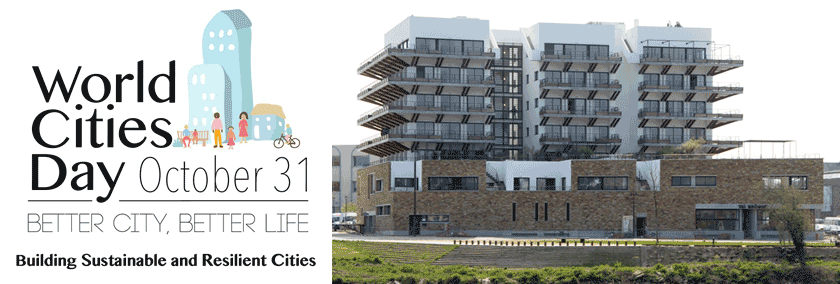 Better City, Better Life… This is the general theme of World Cities Day 2018 celebrated on 31st October. This time, the United Nations has focused on sustainable building and resilient cities, a call to action to rethink how cities become better places to enhance people’s lives.
Better City, Better Life… This is the general theme of World Cities Day 2018 celebrated on 31st October. This time, the United Nations has focused on sustainable building and resilient cities, a call to action to rethink how cities become better places to enhance people’s lives.
WHAT DOES IT MEAN URBAN RESILIENCE?
By 2050, 70% of global population will live in cities. But 60% of new urban settlesments are yet to be built. For this reason, World Cities Day 2018 highlights the opportunities for building urban resilience. This is the ability of any urban system to adapt and transform toward sustainability. A Resilient City acts to prepare to hazars in order to protect people’s lives.
ECO-FRIENDLY MATERIALS FOR GREEN BUILDINGS
Urban design and sustainable infrastructures will play a huge role in building a low-carbon global economy. Eco-friendly materials contribute to create sustainable buildings. These products can reduce the environmental impact of construction. The embodied energy of the materials -the sum of all the energy required from extracting them until their end of life- is important in order to decide which material is more sustainable.
NATURAL STONE, SUSTAINABILITY FOR RESILIENT CITIES
If you are looking for a sustainable material, then natural stone should be your choice. Used over the centuries in structures such as Roman aqueducts, walls, churches and cathedrals, this material can add value to resilient cities. Thanks to the modern technologies, natural stone demands minimal energy to produce. To add on, natural stone products can be easily cleaned. Resilient cities need more sustainable materials like natural stone, 100% recyclable and that can even be reused in new projects.
In fact, natural stone’s thermal inertia helps maintain constant temperatures in your home’s interior. This is a way of promoting comfort and energy efficiency in resilient cities. Furthermore, stone is a non-polluting product. Unlike ceramic materials, no chemicals are used during the production process.
For further information, read our article Sustainable building with natural stone masonry.





